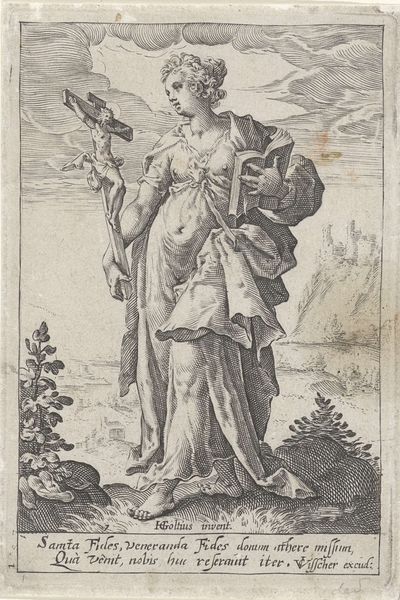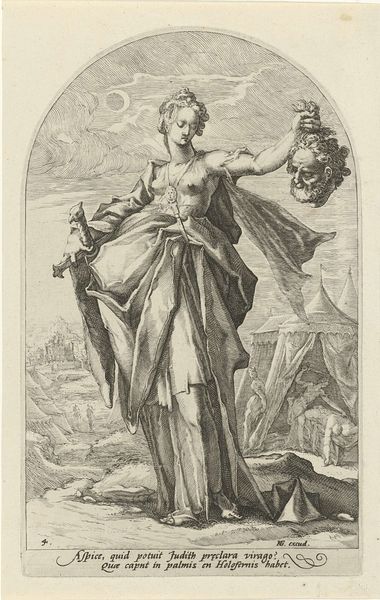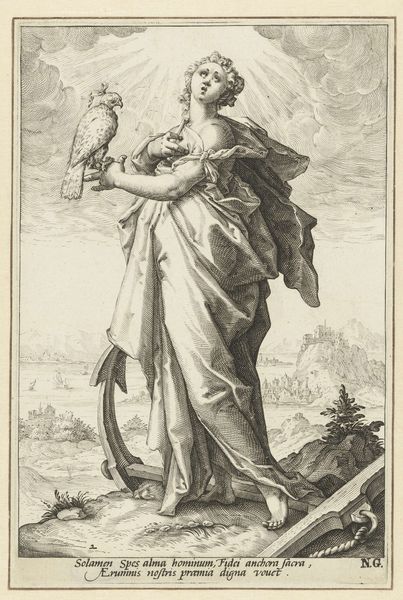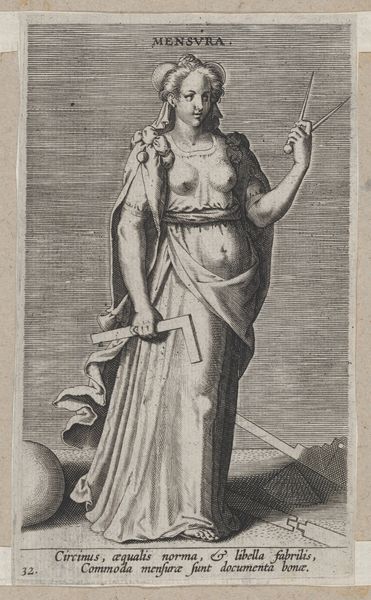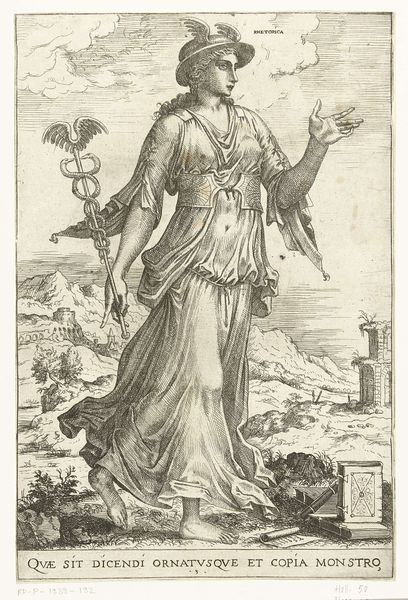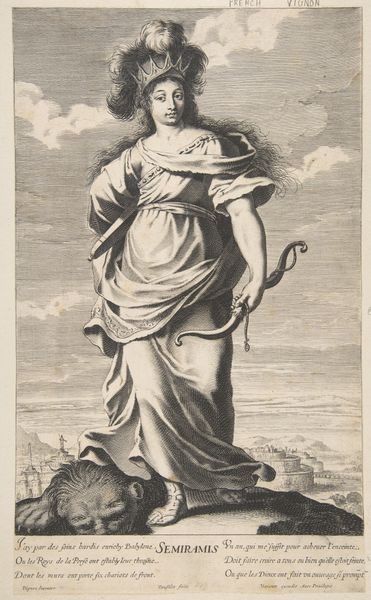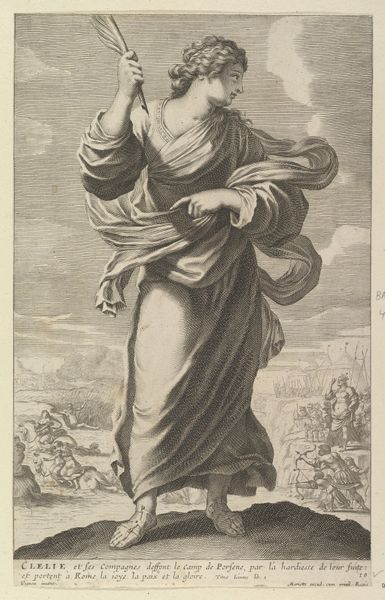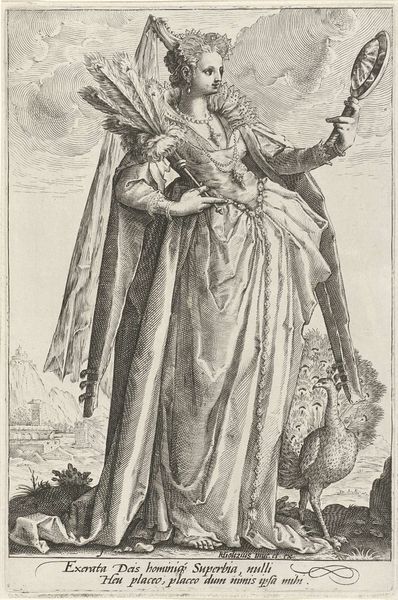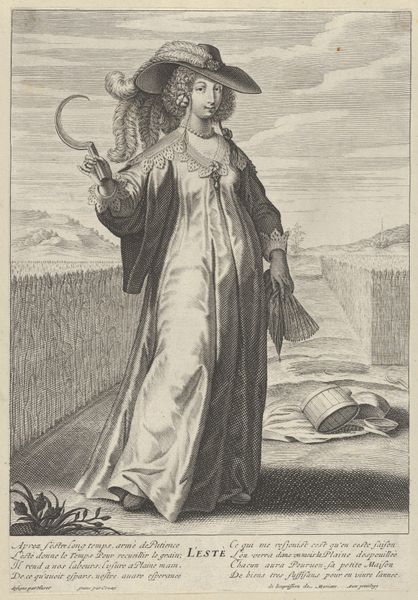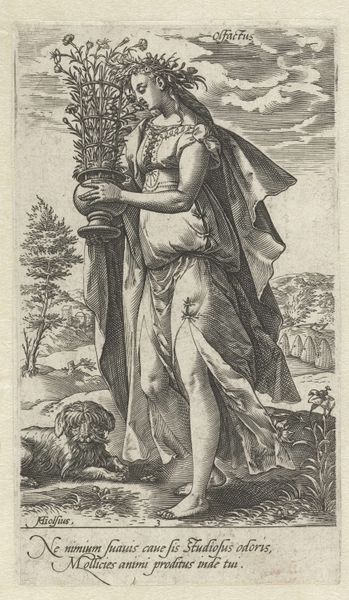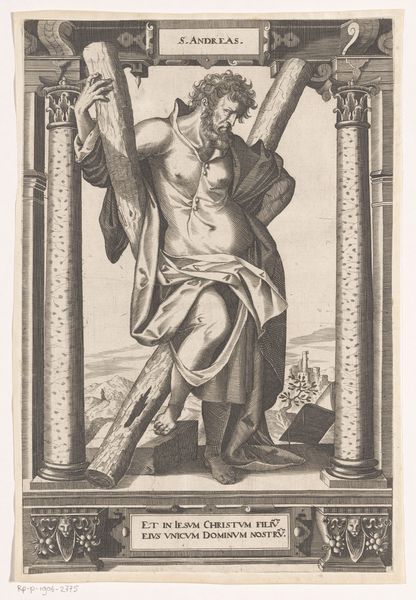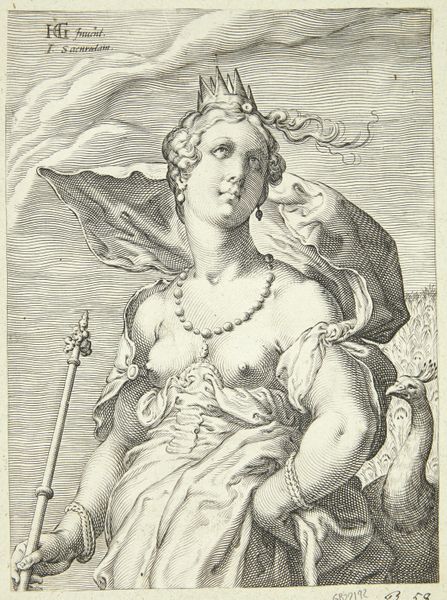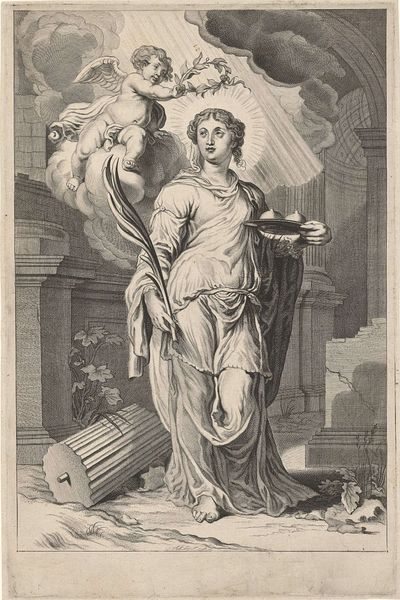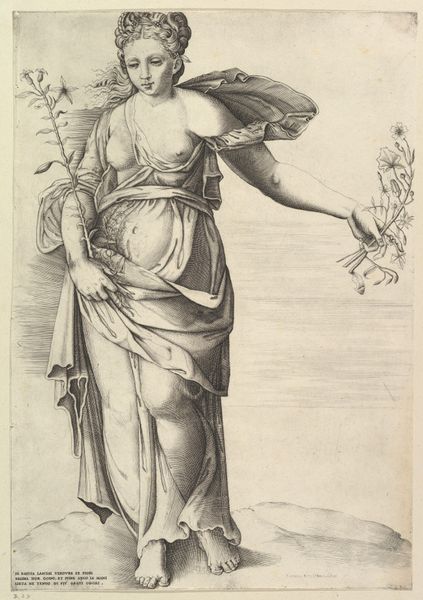
drawing, print, engraving
#
drawing
#
allegory
# print
#
caricature
#
figuration
#
surrealism
#
line
#
history-painting
#
northern-renaissance
#
engraving
Dimensions: Sheet: 9 × 6 7/16 in. (22.9 × 16.3 cm)
Copyright: Public Domain
Editor: This is Zacharias Dolendo’s engraving, *Peace, from Virtues and Vices*, dating from around 1596. The allegorical figure really stands out – so regal and almost imposing. How should we interpret this work? Curator: Considering Dolendo was working during a time of intense religious and political upheaval in Europe, particularly the Dutch Revolt, this representation of peace carries considerable weight. What does it mean to portray peace as a strong, even maternal figure when the lived reality for so many was one of constant conflict? Editor: That’s interesting. I was focusing on the obvious symbols – the olive branch, the dove – but now I see it differently. Curator: Exactly! Peace isn't simply the absence of war. Notice her bearing. She isn’t delicate; her power is rooted in something more profound. And the child on her chest – what might that symbolize in this context? Editor: Perhaps it signifies hope, or the future that peace promises? Curator: Precisely. It makes me think about the active role peacebuilding plays. It’s not passive. Also consider the imagery at her feet; she stands atop discarded weapons, right? These symbols reinforce a commitment, a deliberate choice to move beyond violence. The Latin text speaks of tranquility after horrible war: to what extent do you feel that that commitment towards peace actually takes hold? Editor: It brings a new understanding. Peace as something actively fought for and maintained, rather than simply wished for. Curator: It encourages a necessary reframing; seeing beyond surface-level symbolism. It demands action, holding accountable not only nations but people for what they should achieve for collective prosperity. Editor: I’m glad that your expertise brought a deeper appreciation of what this 16th-century work is communicating. Thank you!
Comments
No comments
Be the first to comment and join the conversation on the ultimate creative platform.
